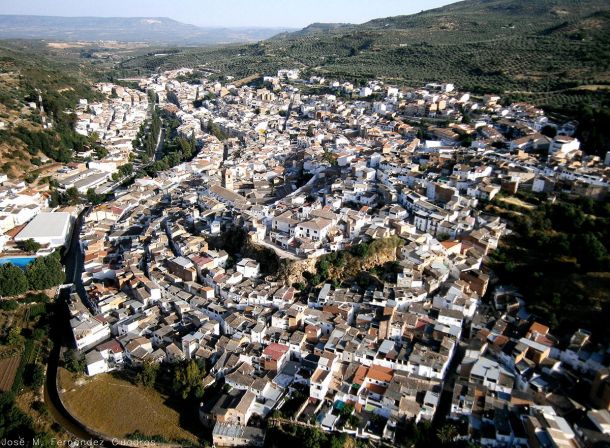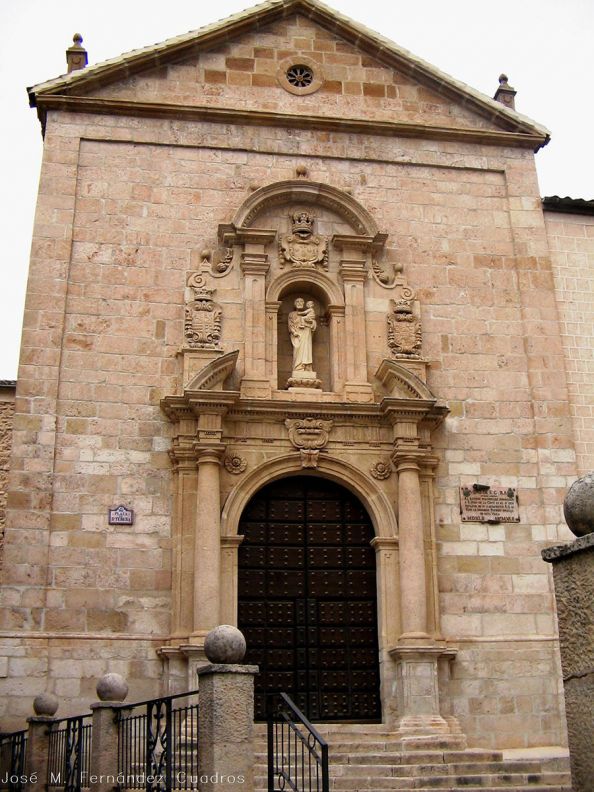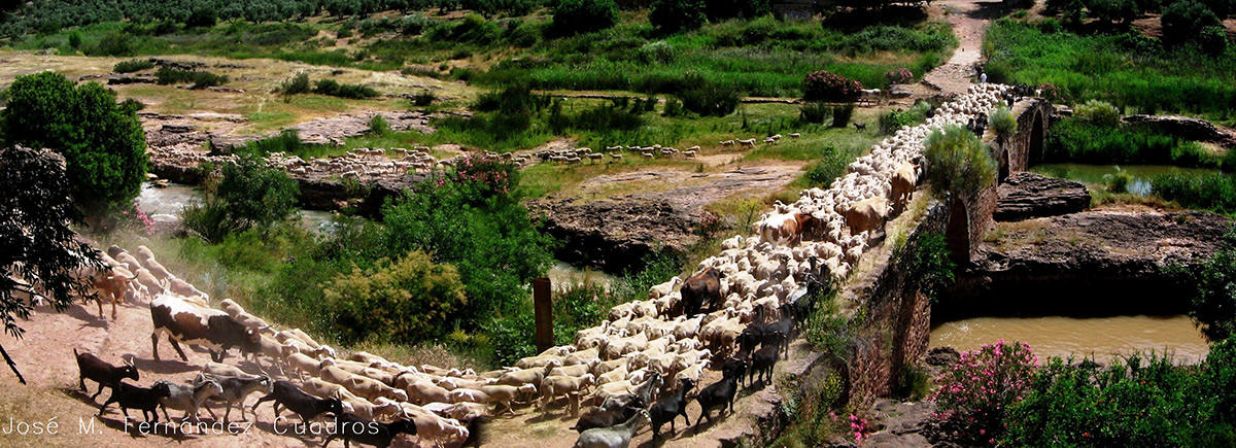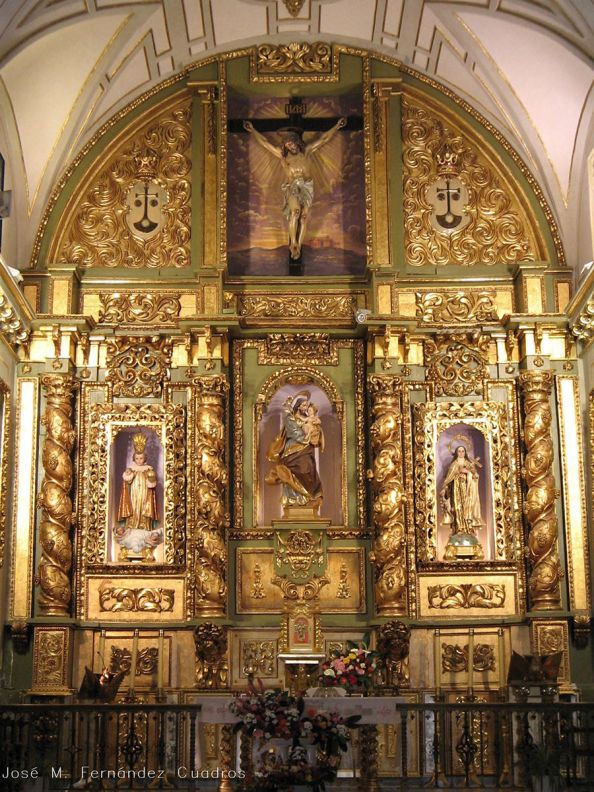Beas de Segura
Teresian Places
Monastery of San José del Salvador
The Monastery of San José del Salvador in the town of Beas was the tenth of St Teresa’s convents and was founded on 24 February 1575. It was the first of its kind in the province of Andalusia.
The foundation in Beas encountered many problems and, finally, King Philip II of Spain intervened in favour of the project. The town, which belonged to Castile, held the Encomienda of the Military Order of St James, which awarded land and other rights to those who settled there and, in the land held by the order, it was not usual for this type of convent to be founded. On her arrival in Beas, seeing how the people welcomed the nuns, the Saint could only write: “They spoke well of the land and they were right, it is both delightful and beautiful”. In her Book of Foundations, on her arrival, she wrote: “…The nuns arrived at the beginning of Lent in 1575. They were welcomed by the people with much formality, joy and procession. The general happiness was great; even the children showed themselves to be part of Our Lord’s work. The Monastery called St Joseph of the Saviour was founded during the same period of Lent on the feast day of St Matthew”.
Doña Catalina Godínez and Doña María de Sandoval, daughters of an important nobleman in the town, were behind the idea of the foundation. The sisters, who entered the order on the same day on which the convent was founded, donated their properties to the community. They included A number of family homes and the house next to the vicarage, which they had acquired for the new monastery. Before the Saint arrived, the houses were adapted: the entrance was built, together with the grilles in the parlour. The high grilles on the walls of the Main Church of Santa María de Gracia were opened so that they could hear Mass, since the construction of the convent church was not to begin until the 17th century, with María de San José as the prioress and funded by donations from Madrid, Naples and The Indies. The church, with its Latin-cross layout and short arms is larger than usual for a Barefoot Carmelite Convent, which tended to have a square layout in accordance with their ideas on simplicity and austerity. The front is in beautiful classic baroque style and is of the Carmelite-style, which was used in Spain throughout the century.
The Monastery of Beas was where the Saint had one of her happiest moments in life: she met Father Jerónimo Gracián, Provincial of Andalusia, with whom she exchanged opinions on the Carmelite Reform and the problems with the original Carmelite Order. However, she also suffered during her stay there since, while in Beas, she received a letter from the Barefoot Carmelites of Valladolid telling her that the Inquisition had taken the book of her life, reported by the Princess of Eboli in revenge for closing down and taking her nuns from the convent of Pastrana.
The monastery has had its ups and downs throughout history and the most serious damage occurred during the War of Independence; however, it still conserves important relics of the mystic Carmelite saints, including various liturgical ornaments of St John of the Cross, relics of St Teresa, the Book of Vows with unpublished handwritten documents by St John of the Cross and a selection of items that belonged to the original foundation.
The Calvary
In October 1578, Beas was visited by San Juan de la Cruz, after he had escaped from the prison of Toledo, to become Prior of El Calvario de Beas (The Calvary of Beas), where he found the spiritual peace he was seeking and wrote some of his most important literary works. He went to the nuns’ convent every week to offer them spiritual guidance and hear their confessions. In recent years, refurbishment work has been carried out on the Camino del Calvario, with the Cruz de los Trabajos (Cross of the Works) as the most symbolic location. It was the last place where St John of the Cross stopped before entering the narrow streets of Beas.
Hospice of the Barefoot Carmelites
In 1659, a hospice was built next to the Main Church and very near the Monastery of San José del Salvador for the Barefoot Carmelites, paid for by the nuns. Today, the hospice is part of several private properties on C/ San Juan de la Cruz, known historically as Callejón del Hospicio.
Chapel of Jesús Nazareno
Today, in the entrance porch of a private home situated at number 23 on C/ La Feria, there is a conserved fresco painting on some of its walls, portraying Jesus of Nazareth and belonging to an old chapel that was built by the Barefoot Carmelites of El Calvario. The painting is a copy of the one conserved in the convent of Segovia, also known as the “Christ who spoke to St John of the Cross”. St John of the Cross’ encounter with the painting of Jesus of Nazareth in Segovia influenced the increase in devotion to Jesus of Nazareth in much of Andalusia.
Interpretation Centre for “The Old Town of Beas, the 16th century and Mysticism”
The Interpretation Centre is located in an old convent-school of the Calasancia Mothers, next to the shrine of the town’s patron saint, the Madonna of La Paz. Built in the 19th century on the remains of the Old Town’s Castle and Fortress, in the thematic area dedicated to the mystics St Teresa of Jesus and St John of the Cross, visitors can see the room of Las Moradas and that of the mystic scale. There is also an allegory of the mystic garden and a temporary exhibition room that is to host an exhibition on the foundation of Beas de Segura on the occasion of the fifth centenary.
Municipal Information Office
www.beasdesegura.es




